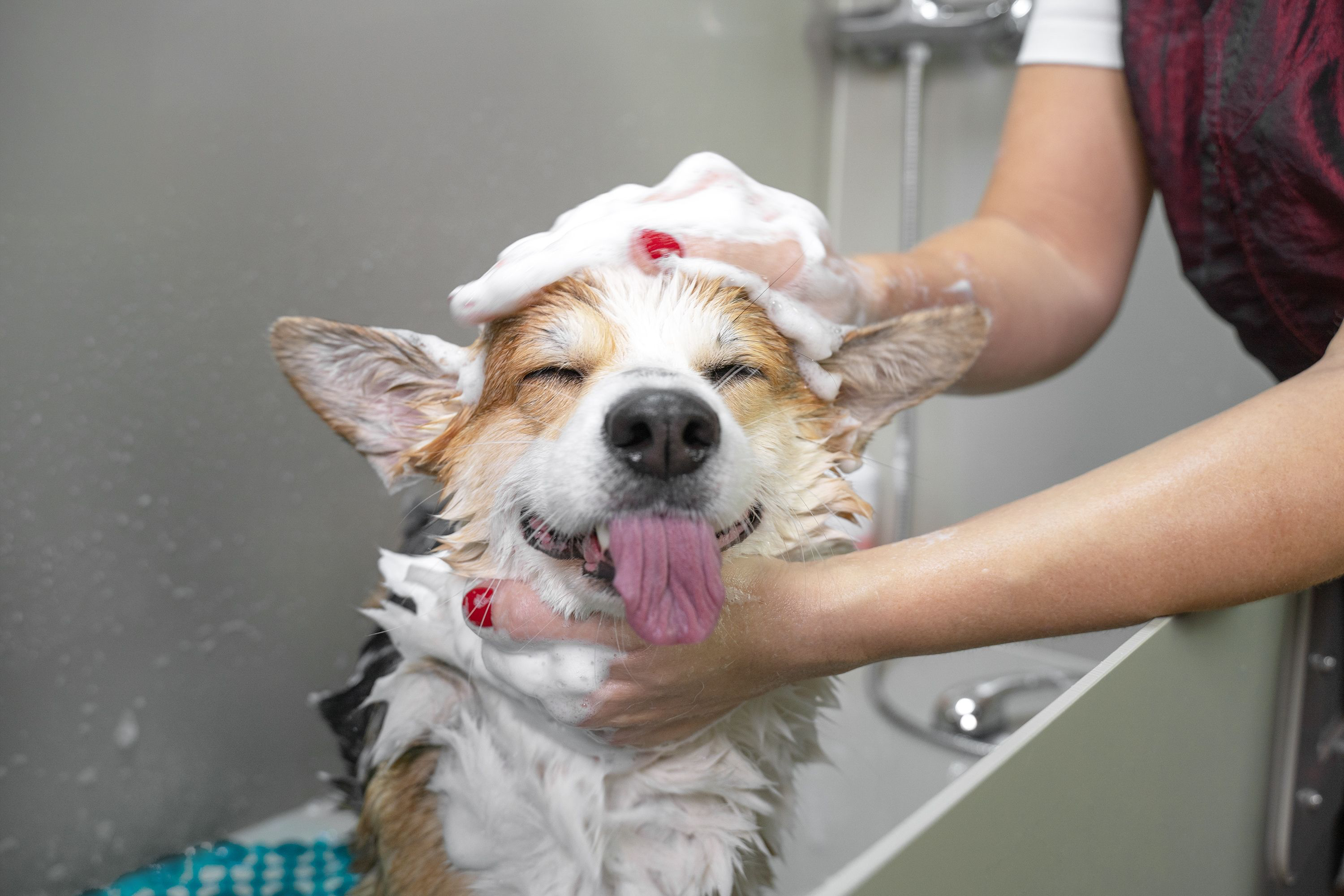How To Choose The Right Dog Food
March 15th, 2024

Welcoming a dog into your home in Las Vegas is a joyous occasion, but with it comes the responsibility of providing them with the best nutrition possible. Just like humans, dogs require a well-balanced diet to thrive and lead a healthy life. Choosing the right dog food can be overwhelming given the myriad options available in the market. In this blog, we will help you navigate through the maze of choices and make an informed decision about what's best for your canine companion.
Table of Contents:
- Understanding Your Dog's Needs:
- Different Brands of Dog Food: The One You Might Need
- Dog Food or Real Food? A List Of Pros & Cons
- When’s The Best Time To Feed Your Dog?
- Nourishing Your Dog's Health and Well-Being
Understanding Your Dog's Needs
The first step to choosing the right dog food is understanding your dog's individual needs. These can vary depending on several factors, including:
Age
Puppies, adult dogs, and senior dogs all have different nutritional requirements. Puppies need food that is high in protein and calories to support their growth and development, while adult dogs need food that provides them with the energy they need to stay active. Senior dogs may need food that is easier to digest or that is formulated to support their joint health.
Breed
Some breeds have specific dietary needs due to their size, activity level, or health conditions. For example, giant breeds may need food that is formulated to help them grow at a healthy rate and support their developing bones and joints.
Activity level
Active dogs will burn more calories than sedentary dogs, so they will need food that is higher in calories and protein.
Health conditions
If your dog has any health conditions, you may need to choose a food that is specially formulated to address those needs. For example, dogs with allergies may need food that is limited in ingredients or that is made with a novel protein source.
Different Brands of Dog Food: The One You Might Need
Determining the "best" dog food brand is difficult and subjective, as it depends on your individual dog's needs and preferences. However, some popular and well-respected brands that consistently rank high in quality and nutrition include:
- Hill's Science Diet: This brand is widely recommended by veterinarians and offers a variety of formulas to meet the specific needs of dogs of all ages, breeds, and health conditions.
- Royal Canin: Similar to Hill's Science Diet, Royal Canin offers a variety of dog food formulas tailored to specific needs. They are known for their kibble size and shape variations that cater to different dog breeds.
- Purina Pro Plan: This brand offers a good balance of quality and affordability. Purina Pro Plan is another brand that frequently recommended by veterinarians and is known for its science-backed formulas.
- Iams: Iams is a popular brand that offers a variety of dog food formulas at a mid-range price point. They are known for their focus on healthy ingredients and balanced nutrition.
- Blue Buffalo: Blue Buffalo is a popular brand that focuses on natural ingredients and grain-free options. They are a good choice for dogs with sensitive stomachs or allergies.
It is always best to consult with your veterinarian before changing your dog's food, especially if they have any health concerns.
Dog Food or Real Food? A List Of Pros & Cons
Dog Food Pros:
- Convenience: Dog food is readily available, easy to store, and requires minimal preparation.
- Balanced Nutrition: High-quality dog food is formulated to meet your dog's specific nutritional needs, ensuring they get the right balance of proteins, fats, carbohydrates, vitamins, and minerals.
- Variety: Dog food comes in a wide variety of formulas to cater to different breeds, ages, activity levels, and even health concerns.
- Cost-effective: While premium dog food can be expensive, it's generally cheaper than buying and preparing fresh, human-grade ingredients every day.
Dog Food Cons:
- Limited Ingredient Transparency: It can be difficult to know exactly what ingredients are in commercially prepared dog food, and some may contain fillers, artificial flavors, and preservatives.
- Processing: The processing involved in making kibble can destroy some of the natural nutrients present in the ingredients.
- Potential for Allergies: Some dogs may develop allergies to certain ingredients commonly found in dog food.
Real Food Pros:
- Freshness and Natural Ingredients: You have complete control over the ingredients that go into your dog's food, ensuring they are fresh, whole, and of high quality.
- Potential for Improved Health: Some dog owners believe that feeding their dogs a fresh food diet can lead to improved health benefits, such as better digestion, shinier coat, and increased energy levels.
- Customization: You can tailor your dog's diet to their specific needs and preferences.
Real Food Cons:
- Time Commitment: Preparing fresh food for your dog every day can be time-consuming, especially for busy individuals.
- Nutritional Balancing: Creating a nutritionally balanced homemade diet can be challenging without consulting a veterinarian or animal nutritionist.
- Cost: Fresh, human-grade ingredients tend to be more expensive than commercially prepared dog food.
- Safety Concerns: Certain human foods can be toxic to dogs, so it's crucial to research and avoid these ingredients when preparing homemade meals.
When’s The Best Time To Feed Your Dog?
While our canine companions may greet every rustle of a treat bag with the same enthusiasm, there's actually some science behind determining the optimal feeding schedule for your dog.
The Digestive Dance:
Dogs, like humans, have a single-chambered stomach. Once filled, it takes roughly 4-8 hours for food to move into the small intestine for further digestion and nutrient absorption. This natural process informs the frequency of meals, with most dogs thriving on two meals spaced 10-12 hours apart. This schedule allows for proper digestion and prevents stomach upset, especially in larger breeds.
Considering Your Pup's Age and Needs:
While twice-daily feedings reign supreme for adult dogs, puppies under 6 months often require 3-4 smaller meals throughout the day to meet their rapid growth needs and maintain stable blood sugar levels. Senior dogs with specific health conditions, on the other hand, may benefit from adjusted portion sizes or feeding frequencies as recommended by their veterinarian.
The Routine Rhythm:
Beyond the biological aspects, consistency is key when it comes to feeding your dog. Establishing a regular feeding schedule provides a sense of security and predictability for your pup, contributing to their overall well-being. This routine also aids in potty training and helps regulate their internal clock.
Beyond the Basics:
While the "when" of feeding is crucial, remember that the "what" and "how" also matter. Consulting your veterinarian about the appropriate diet and portion size for your dog's breed, age, and activity level is essential. Additionally, consider slow feeders to prevent gulping and potential digestive issues, and incorporate interactive feeding toys to keep mealtimes stimulating and engaging.
Nourishing Your Dog's Health and Well-Being
Ensuring your dog receives proper nutrition is fundamental to their health and happiness. By taking into account their individual needs based on factors such as age, breed, activity level, and health conditions, you can make informed decisions about their diet. Whether you choose commercially produced dog food or opt for homemade meals, prioritizing quality and balance is key.
Furthermore, maintaining your dog's grooming regimen in Las Vegas is just as important as their nutrition. Regular grooming in Las Vegas helps keep your pet healthy, comfortable, and looking their best. With Find My Groomer, you can explore grooming services available in the Las Vegas area. We make sure to connect you with professional groomers dedicated to providing top-notch care for your furry friend. Visit Find My Groomer today to ensure your dog receives the best grooming they deserve, whether it's through mobile or in-store services.
FAQs
● What factors influence a dog's nutritional needs?
Age, breed, activity level, and health conditions are all key factors. Puppies, adult dogs, and seniors have different needs. Certain breeds may have specific dietary requirements due to size, activity level, or health predispositions. Active dogs burn more calories and need food with higher levels of protein and calories. Dogs with health conditions may require specialized diets.
● How can I determine my dog's specific needs?
Consulting your veterinarian is the best way to understand your dog's individual needs and get recommendations for a suitable diet.
● What is the "best" dog food brand?
There is no single "best" brand as it depends on your individual dog's needs and preferences. However, some popular and well-respected brands are mentioned in the guide.
● What factors should I consider when choosing a dog food brand?
Consider your dog's age, breed, activity level, and health, and consult your veterinarian for recommendations.
● What are the pros and cons of feeding dog food?
Dog food is convenient, balanced, comes in various formulas, and can be cost-effective. However, transparency concerning ingredients can be limited, processing may reduce nutrients, and some dogs may have allergies to certain ingredients.
● What are the pros and cons of feeding real food?
Real food offers fresh, natural ingredients, potential health benefits, and customization. However, it requires time commitment, ensuring nutritional balance can be challenging, and it can be more expensive than dog food. Additionally, you need to be aware of foods that are toxic to dogs.
● How often should I feed my dog?
Most adult dogs thrive on two meals spaced 10-12 hours apart. Puppies, seniors, and dogs with specific needs may require different feeding schedules as mentioned in the guide.








